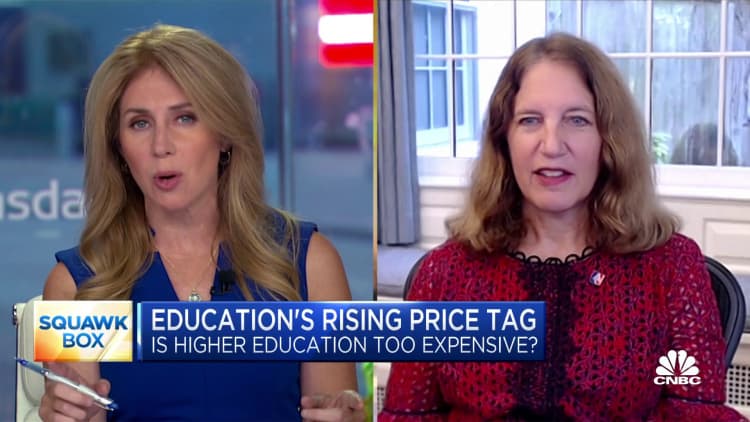
A simplified Free Application for Federal Student Aid is finally online after a significant delay.
However, as part of a “soft launch,” the new FAFSA form has only been periodically available. It’s likely few, if any, of the millions of students applying to college for the 2024-25 academic year have been able to successfully submit an application, according to higher education expert Mark Kantrowitz.
“I am convinced that nobody has been able to submit the form,” he said.
“Congress required the FAFSA to be available before Jan. 1, 2024. They missed that deadline,” Kantrowitz said.
More from Personal Finance:
This strategy can help you meet New Year’s resolution goals
Student loan borrowers won’t face missed payments penalties
Fewer students are enrolling in college
“Leading up to and as part of the soft launch, we have identified some minor issues,” the U.S. Department of Education said in a statement Sunday . “We are aware of these issues and are working to resolve them.”
For now, Kalman Chany, a financial aid consultant and author of The Princeton Review’s “Paying for College,” advises students and families not to panic. “If you are having access issues, it is better to wait,” he said.
“They had to have something available even if it wasn’t ready for prime time.”
Even if students do submit a completed 2024–25 FAFSA form early this year, that information won’t be sent to schools until late January, the Department of Education also said, “so you will have ample time to fill out the form and do not need to rush to complete the form during the soft launch.”
With the delayed timeline, colleges might still be able to get financial aid award offers done by late March or early April, according to Kantrowitz. “Otherwise, it will be a complete disaster,” he said. “Families will not be able to get financial aid offers in a timely manner. Already, students who applied early action or early decision do not have award offers.”
What’s changed with the new FAFSA
Not only has the timing changed, but the simplified form now also uses a calculation called the “Student Aid Index” to estimate how much a family can afford to pay.
Under the new system, more low- and moderate-income students will have access to federal grants, but the changes will reduce eligibility for some wealthier families.
And, as part of the FAFSA simplification, families will no longer get a break for having multiple children in college at the same time, effectively eliminating the “sibling discount.”
They had to have something available even if it wasn’t ready for prime time.
Kalman Chany
author of The Princeton Review’s “Paying for College”
For now, the new FAFSA also relies on old consumer price index figures from 2020, which don’t account for the recent runup in inflation. That could mean many students “will get less financial aid than they deserve,” Kantrowitz said.
“It is a pretty big deal,” he said. “We are talking about thousands of additional dollars that families will have to pay for college.”
All families of four in this application cycle with adjusted available income over $35,000 will be affected by the failure to make inflationary adjustments, with middle- and higher-income students the hardest hit, according to Kantrowitz. There will be less of an effect on lower-income students whose expected family contribution was already $0.
For example, a typical family in New York with adjusted available income of $100,000 could be expected to contribute $12,943 instead of $9,162 toward their annual college costs — a difference of nearly $4,000 in aid, according to calculations by Kantrowitz.
Subscribe to CNBC on YouTube.
























































![OneRepublic – Hurt (feat. Jelly Roll) [Official Music Video] OneRepublic – Hurt (feat. Jelly Roll) [Official Music Video]](https://i.ytimg.com/vi/pDrD73iohmA/maxresdefault.jpg)

![Bruno Mars, Anderson .Paak, Silk Sonic – Smokin Out The Window [Official Music Video] Bruno Mars, Anderson .Paak, Silk Sonic – Smokin Out The Window [Official Music Video]](https://i.ytimg.com/vi/GG7fLOmlhYg/maxresdefault.jpg)



















